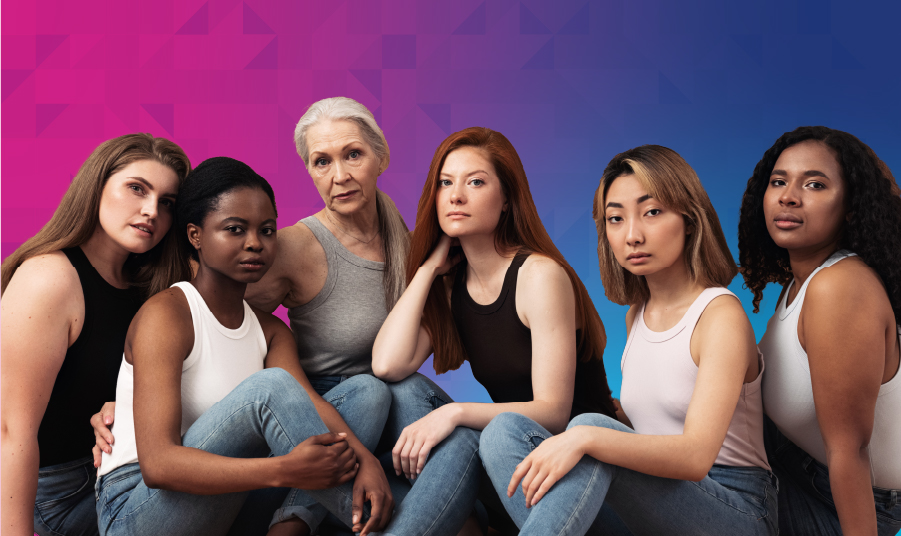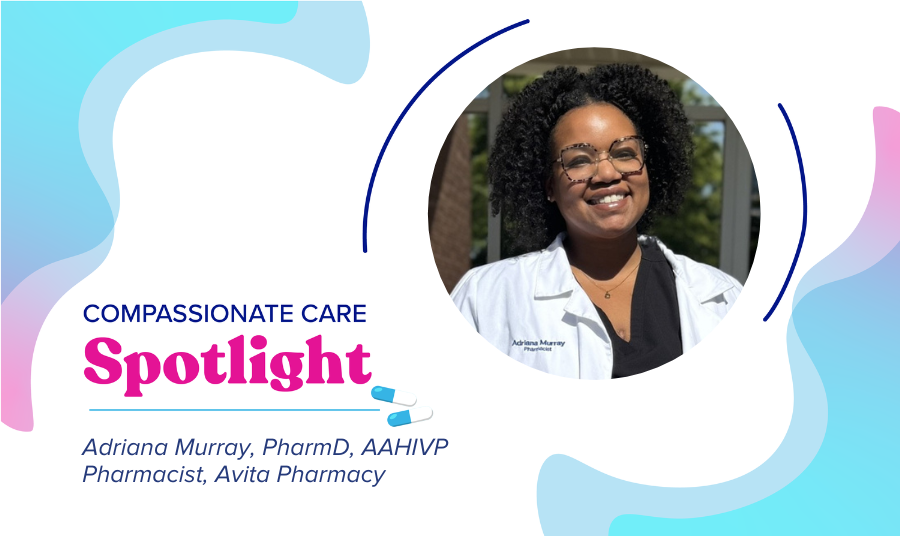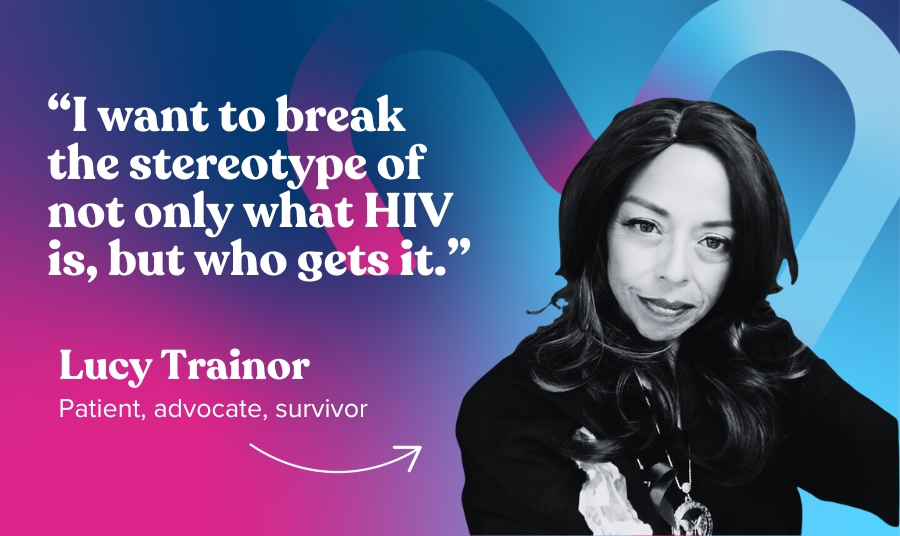Women accounted for 19% of the nation’s new HIV diagnoses in 2022, a burden heavily carried by Black women living in the South. Yet data shows that while 71% of U.S. cisgender women had heard of the HIV prevention medication pre-exposure prophylaxis (PrEP), only 20% had ever used it.
To better understand the discrepancy, Q Care Plus’ Jennifer Belfry hosted a roundtable and invited Rasheeta Chandler from the Nell Hodgson Woodruff School of Nursing at Emory University, Tisa D. Collins-Douglas from the Center for Health Empowerment (CHE), and Megan Masse from Avita Pharmacy. Read on to gather their insights on why stigma uniquely impacts women’s understanding and uptake of PrEP, how they’re being “left behind” on the PrEP research front, and what clinicians and pharmacists can do to close this glaring gap in women’s wellness.
Note: This roundtable discussion has been edited for length and clarity.
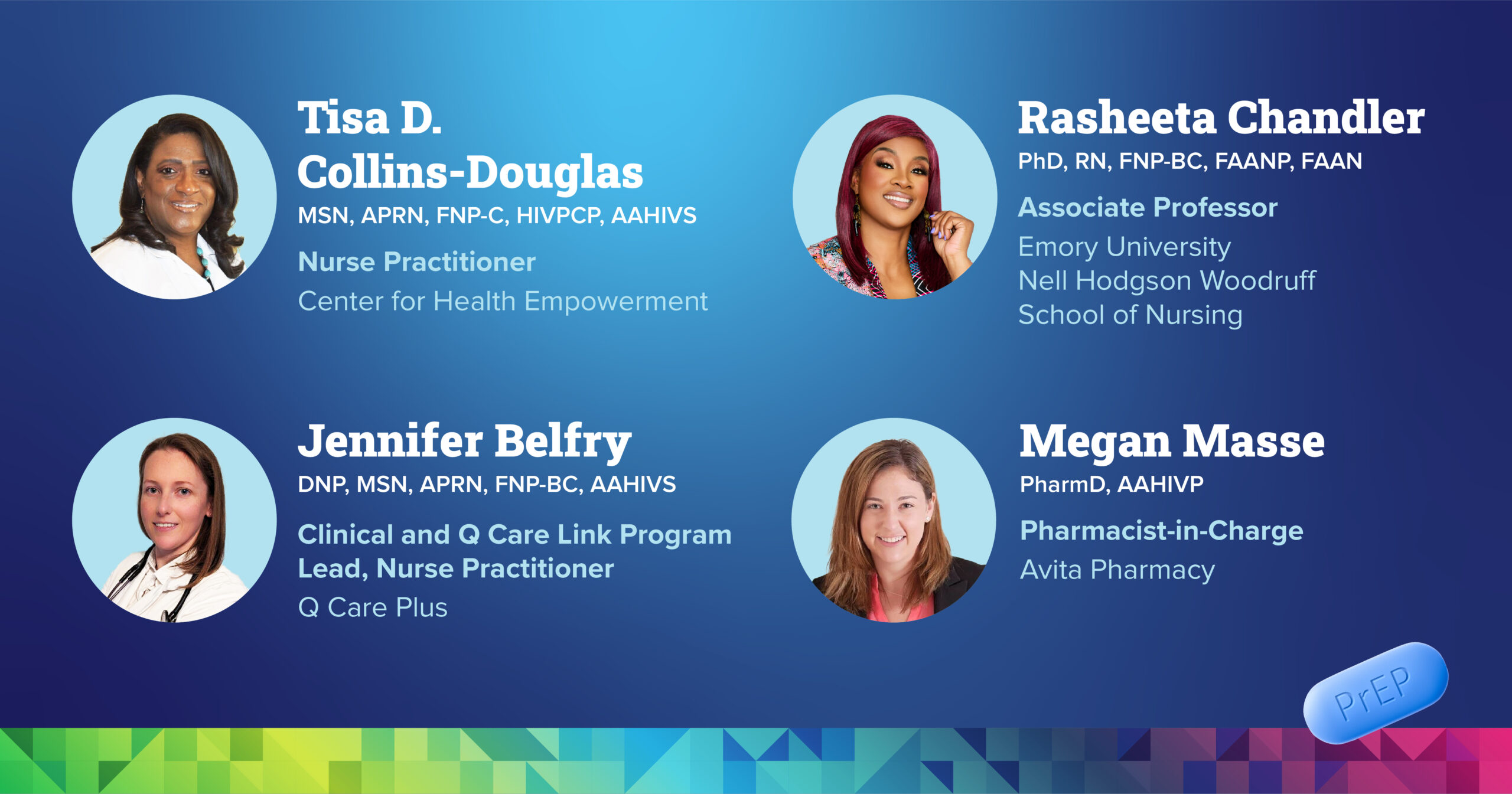
JENNIFER BELFRY, Q CARE PLUS: Thanks to all of you for joining me here today to talk about the challenges and opportunities related to HIV prevention for women via pre-exposure prophylaxis (PrEP). To get the conversation started, let’s do a quick stats dump, and then we’ll go around the table and gather your reactions. Here goes:
- Women accounted for 19% of new HIV diagnoses in 2022, according to a study by the Centers for Disease Control and Prevention (CDC).
- Black women carried a disproportionate burden for new HIV diagnoses. A full 47% of new HIV diagnoses among females occurred among women in the Black community, and the rate of new HIV diagnoses for Black females was nearly eight times the rate for white females and more than three times the rate for Hispanic/Latinx females.
- The CDC found that HIV diagnoses through heterosexual contact accounted for 85% of all diagnosed infections among Black females, 80% of all infections among Latinx females, and 67% of all infections among white females.
- Women can bear a particularly difficult burden when living with HIV and exhibit a greater prevalence of non-AIDS -related comorbidities that continue later in life.
AND YET
- A 2022 study presented at ID Week showed that while 71% of U.S. cisgender women participating in a national survey had heard of PrEP for HIV infection, only 20% had ever used PrEP, and only 9% were using it at the time of the survey.
Why, given the significant need to reduce the risk of HIV infection and the decent awareness rate, has the adoption of PrEP among women in the U.S. remained so poor?
Knowing about something and knowing it’s for you are two different things.
Rasheeta Chandler
PhD, RN, FNP-BC, FAANP, FAAN
Associate Professor
Emory University
TISA COLLINS-DOUGLAS, CENTER FOR HEALTH EMPOWERMENT (CHE): I believe it is due to lack of education. Women are just not aware of PrEP. I speak with a lot of young females, predominantly Black and Hispanic, that don’t think PrEP is for them. They trust their partners and don’t feel they are at risk for HIV. They also think PrEP medication is strictly for gay men.
RASHEETA CHANDLER, EMORY UNIVERSITY: Black women only make up 13% of the U.S. population. So, I’m wondering if the awareness survey is truly representative of Black women, who are still reporting that they’re not being adequately informed about PrEP. The content and delivery of PrEP information today still emphasizes men who have sex with men or same-gender-loving individuals. Maybe Black women know about PrEP, but in what context? Knowing about something and knowing it’s for you are two different things.
I would push back and ask how Black women are being engaged in conversations about PrEP. Are these conversations culturally relevant and applicable to what they experience in their daily lives?
MEGAN MASSE, AVITA PHARMACY: In general, the U.S. market is a little slow on the uptake when it comes to promoting PrEP to women. I’m starting to see more commercials now for Apretudeand Descovy, but if you look at many of those ads, there are no women in the commercials. So, yes, PrEP is getting into the hands of some people who need it. But women are getting left behind when it comes to promoting PrEP as a tool for women.
JENNIFER BELFRY: What about in messaging from departments of public health? Have you all seen women represented in their PrEP ads?
TISA COLLINS-DOUGLAS: I have not. The pharmaceutical companies are getting better; when the representatives visit the clinic, providers point out that their ads don’t represent the cis female population. Most of the time, it’s two men. So, of course, when women see those PrEP advertisements, they don’t think the drug is for them because they’re not represented.
MEGAN MASSE: There’s also the cultural assumption that if a woman contracts HIV, it’s because of IV drug use when, looking at the statistics we just covered, a large percentage of HIV infections in women are caused by heterosexual sex. I can tell you that PrEP was never offered at any of my personal doctor’s appointments before marriage. It wasn’t talked about unless you were considered at risk. And many providers don’t consider women at risk if they’re in a heterosexual relationship.
I speak with a lot of young females, predominantly Black and Hispanic, that don't think PrEP is for them. They trust their partners and don’t feel they are at risk for HIV. They also think PrEP medication is strictly for gay men.
Tisa D. Collins-Douglas
MSN, APRN, FNP-C, HIVPCP, AAHIVS
Family Nurse Practitioner
Center for Health Empowerment (CHE)
Exploring how stigma impacts women’s use of PrEP
JENNIFER BELFRY: Let’s dive deeper into stigma, particularly the stigma that is unique to women regarding PrEP. An example might be that HIV only affects men who have sex with other men. What are you all hearing?
RASHEETA CHANDLER: Unfortunately, stigma is ever-looming. In the HIV world, it impacts everyone. In the Black community, it’s amplified. There are cultural issues around it: The topic of sex is taboo, and you couple that with a disease that was once seen as a death sentence. It’s now known as a chronic illness, but HIV still has a lot of stank on it.
While we’re trying to improve this, we’re just not there yet. Particularly in the South, we’re not as progressive—the biomedical part of HIV prevention has not necessarily caught hold of the Southern space. Black women are still being told that PrEP is not for them.
I’m happy to see that people are talking about their use of PrEP. Recently, the R&B musician and reality TV personality Tamar Braxton said she’s taking it. But people don’t always want to hear about it from celebrities; they want to learn about it from their providers, next-door neighbors, or friends. If we normalize the conversation around PrEP and it’s in people’s general wellness toolkits, that will help with stigma. We’ve got to stop isolating it as an independent preventative option.
They don't want anyone to know they’re on PrEP; people can research the medication and say, “No, that medication is for HIV. You must have HIV.” That’s a stigma they don’t want any part of.
Tisa D. Collins-Douglas
MSN, APRN, FNP-C, HIVPCP, AAHIVS
Family Nurse Practitioner
Center for Health Empowerment (CHE)
TISA COLLINS-DOUGLAS: The stigma that “If I’m taking this medication [PrEP], I have HIV” runs across the board for all patients but is particularly impactful for women [some of the same medications used for PrEP are also used in combination with other medications to treat HIV]. They don’t want anyone to know they’re on PrEP; people can research the medication and say, “No, that medication is for HIV. You must have HIV.” That’s a stigma they don’t want any part of.
JENNIFER BELFRY: That’s for sure. I’ve seen patients go to the emergency room (ER) for the flu and bring their PrEP with them. And the ER doctor says, “Why are you on HIV medication? Do you have HIV?” So, that stigma comes from our healthcare system, too.
MEGAN MASSE: I’ve noticed that most of the stigma-related conversations come from my active HIV treatment patients, not from my PrEP patients, and particularly from women. These patients will say to me, “You know, I got HIV, but it was from a blood transfusion.” People are often very quick to assign the blame off of themselves.
Really? Do we do this with any other disease? We have treatments now that make the life expectancy of somebody living with HIV the same as someone who’s not. But there’s still that feeling of, “I need to defend how I got this diagnosis because I don’t want you to judge me.” I hear that way more from my women patients than the men.
If we normalize the conversation around PrEP and it’s in people’s general wellness toolkits, that will help with stigma. We've got to stop isolating it as an independent preventative option.
Rasheeta Chandler
PhD, RN, FNP-BC, FAANP, FAAN
Associate Professor
Emory University
Structural barriers to PrEP uptake for women
JENNIFER BELFRY: What other structural barriers to getting on PrEP exist for women that don’t for men? Let’s also consider specific challenges that exist for transgender women.
TISA COLLINS-DOUGLAS: In my experience, primary care providers (PCPs) want to focus on primary care. They don’t want to do sexual health, they don’t want to prescribe PrEP, but they also don’t know where to send patients looking for these services. So, the subject of PrEP sometimes doesn’t even come up. They might know about PrEP, but not enough to prescribe it.
If you’re female and go to your obstetrician-gynecologist (OB-GYN), they might be testing you for sexually transmitted infections (STIs) but not discussing how to prevent them beyond condoms, which are dependent on use by the male partner. At CHE, we supply female condoms.
MEGAN MASSE: PrEP should be treated like birth control. When a young woman is old enough and they’re talking with their doctor about birth control, why is PrEP not offered in that same conversation?
Women think they can’t get HIV. But if PrEP is addressed at age 17 or 18, when a woman might be looking into birth control, that’s a perfect opportunity. At the end of the day, it’s all prevention, right?
TISA COLLINS-DOUGLAS: That’s exactly how I incorporate PrEP into the conversation with my female patients. I tell them, “It’s just like birth control. You can’t be a little bit pregnant, and you can’t have a little bit of HIV. You take this one pill every day like you would your birth control.”
I approach it from a holistic point of view with females. However, we need more PrEP education, more providers that can offer this type of information, or at least refer patients to someone who can.
We need more PrEP education, more providers that can offer this type of information, or at least refer patients to someone who can.
Tisa D. Collins-Douglas
MSN, APRN, FNP-C, HIVPCP, AAHIVS
Family Nurse Practitioner
Center for Health Empowerment (CHE)
JENNIFER BELFRY: As a provider, if you’re not getting a PrEP discussion in before women are sexually active, you’re doing them a disservice. Most young women have access to healthcare. It’s getting the PrEP information to the pediatricians and OBs and empowering them to start prescribing more PrEP that would help.
Let’s be sure to discuss the specific challenges around PrEP that exist for transgender women. Megan, what are you seeing at the pharmacy level?
MEGAN MASSE: Transgender patients often deal with the confusion of which PrEP medication is best for them. Each treatment has different approval populations. Transgender patients can get caught up in, “Well, maybe I need PrEP, but I don’t know what kind I need. So maybe I just won’t explore it.”
At Avita Pharmacy, I’m lucky to partner with clinics and covered entities specializing in PrEP. However, providers are confused about which patients are eligible for which kind of PrEP. You see providers who default to Truvada because they figure there’s a good chance that it’s the best option. But if their patients experience long-term side effects, they won’t stay on it.
Before I started working at Avita 10 years ago—and granted, PrEP wasn’t as big of a deal then—there were many unknowns about PrEP. That still prevails, particularly in environments that are not specialized for LGBTQ+ individuals.
A good amount of the female patients I have who are on PrEP came to me after they had an exposure to HIV. The only reason they’re on PrEP is because they had a scare, and now they’re looking to make sure it doesn’t happen again, as opposed to making sure it didn’t happen in the first place. The PrEP conversion has to occur earlier for women, not as a reaction.
A good amount of the female patients I have who are on PrEP came to me after they had an exposure to HIV. The only reason they're on PrEP is because they had a scare, and now they're looking to make sure it doesn't happen again, as opposed to making sure it didn't happen in the first place.
Megan Masse
PharmD, AAHIVP
Pharmacist-in-Charge
Avita Pharmacy
Women getting left behind: The PrEP research gap
JENNIFER BELFRY: Is there a research gap regarding PrEP’s impact on women that causes them to get “left behind?” What about a provider knowledge gap?
RASHEETA CHANDLER: Yes. PrEP was not marketed or geared toward women during its roll-out. There was a strong emphasis on men who have sex with men and same-gender-loving individuals. That not only hindered women’s consideration of PrEP but also caused research gaps. We don’t have many women taking PrEP, so most of the research is formative or qualitative.
I’m on the digital side of research, and it has lagged. I had a very difficult time convincing national funders to see the importance of including women in a digital communication network. Several digital tools geared toward men who have sex with men were funded through national organizations, but not one had been developed for women.
Savvy Her [a mobile application that addresses HIV prevention and sexual and reproductive health among Black women living in the South; Dr. Chandler is the principal investigator for the project] is made for women. It emphasizes HIV prevention because that is the main goal. But women want to know about their health in general and not in silos. So, it’s an app developed around wellness with a robust HIV prevention mechanism. Whether it’s explaining where you can get PrEP or HIV testing, it gives women options in a way that we can study to see whether these are strategies women favor.
PrEP was not marketed or geared toward women during its roll-out. There was a strong emphasis on men who have sex with men and same-gender-loving individuals. That not only hindered women’s consideration of PrEP but also caused research gaps.
Rasheeta Chandler
PhD, RN, FNP-BC, FAANP, FAAN
Associate Professor
Emory University
MEGAN MASSE: The research gap question is tricky because who will be signing up for clinical trials? People who think they’re at risk. You’re not getting heterosexuals to take part in PrEP clinical trials in general in the U.S. There are some, but they’re not the typical patient signing up for it.
Look at the drug approvals: Logic would dictate that eventually, Descovy is going to be approved for cisgender women because it’s not that different [than other PrEP medications]. But we must jump through these hoops to get this done for women.
And women who are pregnant or are exploring pregnancy are an entire population who are often excluded from a lot of the clinical trials or are reluctant to join them. You also have young women who say, “I don’t want to be in a clinical trial because what if it impacts my ability to get pregnant in the future?” It’s not something men typically think about as much.
JENNIFER BELFRY: Also, many of the clinical trials regarding PrEP for women are done in other countries where they may have a higher need and higher uptake. You see a lot of those trials going on in Africa.
Perhaps females in the United States who might be at risk for HIV aren’t enrolling in PrEP trials because they don’t think it’s for them because it’s not studied as much here.
In terms of a provider knowledge gap, many primary care providers don’t have time to stop and prescribe PrEP, not to mention learn about it if they’re not already familiar. They’re already underwater with low reimbursements, tons of patients, and so little time with each patient. We must work together as providers and build a network to help every patient get what they need from their healthcare.
RASHEETA CHANDLER: Even if there is a reduced level of comfort among certain providers, just knowing how to refer someone to another connection who provides medical HIV prevention resources is important. Don’t leave patients hanging or allow them to get lost in the shuffle.
We must work together as providers and build a network to help every patient get what they need from their healthcare.
Jennifer Belfry
DNP, MSN, APRN, FNP-BC, AAHIVS
Clinical and Q Care Link Program Lead, Nurse Practitioner
Q Care Plus
PrEP in action: What’s working on the front lines
JENNIFER BELFRY: Tisa, what’s working and what’s not on the front lines in terms of educating women about PrEP and increasing adoption? How can we encourage women who are on the fence about adopting PrEP to do so without using a fear-based approach?
TISA COLLINS-DOUGLAS: I take a holistic care approach with anyone who comes into our clinic, especially the females. We discuss their last OB-GYN appointment, including pap smears, birth control, and HIV prevention. But I also talk to women about self-worth and self-love. Women tend to take care of everyone but themselves.
One thing I emphasize is that there’s no judgment. This is a safe space to discuss whatever conversation you want to have about sexual health. Nothing’s going to shock me. Then I get them to realize that no one will take care of them like themselves, and that they need to love themselves enough to protect themselves.
When my female patients sit back and think, “I am worth it; I’m worth taking care of,” it opens the doors to good communication, and they are more receptive to starting and staying on PrEP.
And any time I have a conversation with a PCP or OB-GYN, I let them know, “If you’re not comfortable prescribing PrEP, send your patients to me.”
When my female patients sit back and think, “I am worth it; I'm worth taking care of,” it opens the doors to good communication, and they are more receptive to starting and staying on PrEP.
Tisa D. Collins-Douglas
MSN, APRN, FNP-C, HIVPCP, AAHIVS
Family Nurse Practitioner
Center for Health Empowerment (CHE)
The pharmacist’s role in increasing PrEP adoption by women
JENNIFER BELFRY: Megan, what role do pharmacists and pharmacy teams play in increasing PrEP education and adoption among women?
MEGAN MASSE: I need to look at this from the perspective of an Avita pharmacist and also as a former retail pharmacist. Patients in most traditional retail pharmacy settings feel like they’re just a number. They don’t see the pharmacist behind the counter as a provider; they’re just somebody who’s churning out your medication so you can get home. It’s fast food. Part of the reason I left the retail pharmacy setting is because that’s not why we go to school. We go to school to be medication experts and care for patients, not customers.
I’m endlessly grateful that at Avita, I can take the time to have conversations with patients. I have patients who feel comfortable telling me their whole life stories. It’s something that I would never have the time or ability to do in another setting.
More than 70% of the pharmacists at Avita have earned their American Academy of HIV Medicine certifications. We use our roles as HIV experts when onboarding new patients. It doesn’t have just to be, “What are your allergies? Do you want text messages?” If I see that a patient is getting a prescription for birth control, I can ask them, “Did you talk to your provider about any other medications? Is there anything else you need us to provide for you?”
We open the door and have more than a transactional conversation with patients. It’s something Avita pharmacists excel at. But as a profession, pharmacists need to make themselves more available. Every pharmacist I know wants to be a good provider, but they may have other circumstances stacked against them.
I have a great team and work directly with providers and case managers from our partner clinics. It becomes a team effort, and the patients can tell.
I have a great team and work directly with providers and case managers from our partner clinics. It becomes a team effort, and the patients can tell.
Megan Masse
PharmD, AAHIVP
Pharmacist-in-Charge
Avita Pharmacy
ABOUT THE PANELISTS
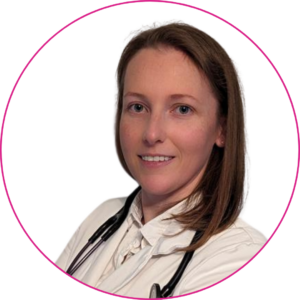
Jennifer Belfry, DNP, MSN, APRN, FNP-BC, AAHIVS
Clinical and Q Care Link Program Lead, Nurse Practitioner
Q Care Plus
Jennifer Belfry is a nurse practitioner and clinical and Q Care Link program lead at Q Care Plus, where she is a driving force behind the community-focused care management solution’s mission of leveraging technology to compassionately remove patient healthcare barriers through stigma-free telehealth services, including world-class HIV prevention (PrEP) and sexual wellness care. She is fueled by a fierce belief that compassionate healthcare is a human right and one that is wrongfully denied to scores of patients seeking HIV prevention and treatment services every day.
A commitment to research and sharing best practices in HIV care with other clinicians is central to Jennifer’s success. In 2024, the Association of Nurses in AIDS Care (ANAC) awarded her the Frank Lamendola Achievement Award for Nursing Leadership in HIV Care. In 2023, she received her Doctorate in Nursing Practice (DNP) from the University of Massachusetts Boston, which was preceded by earning her MSN and BSN from Columbia University. Jennifer is certified as an HIV Specialist by the American Academy of HIV Medicine and is an adjunct professor at the University of Rhode Island.

Rasheeta Chandler, PhD, RN, FNP-BC, FAANP, FAAN
Associate Professor
Emory University’s Nell Hodgson Woodruff School of Nursing
Rasheeta Chandler is an associate professor at Emory University’s Nell Hodgson Woodruff School of Nursing. She also holds an adjunct professorship at Morehouse School of Medicine and a visiting professorship at the University of California, San Francisco (UCSF).
Throughout her career as a researcher, academician, and clinician, she has focused on promoting optimal reproductive health, protective sexual behavior, and STI/HIV prevention among Black women and other women of color. Her research addresses the critical need for interventions in this population, which faces disproportionately high rates of inferior sexual and reproductive health outcomes, including maternal mortality and STI/HIV transmission.
Specifically, she focuses on digital approaches to promote STI/HIV prevention and combat maternal mortality among Black women, exploring how new forms of technology and communication might support this population’s sexual and reproductive health. Her focus on Black women is part of her broader commitment to reducing health disparities among underserved populations, including rural communities. In addition, she is committed to building collaborative relationships between researchers and community members. Her contributions as a researcher, clinician, and faculty member are all directed toward these goals.
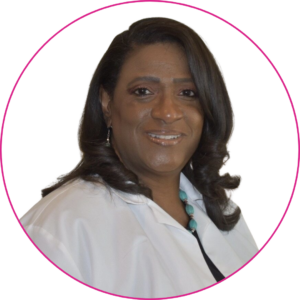
Tisa D. Collins-Douglas, MSN, APRN, FNP-C, HIVPCP, AAHIVS
Family Nurse Practitioner
Center for Health Empowerment (CHE)
Tisa Collins-Douglas is a certified family nurse practitioner at the Center for Health Empowerment (CHE) in Austin, Texas. Her educational background includes earning a Bachelor of Science in Nursing (BSN) and Master of Science in Nursing – Family Nurse Practitioner (MSN) from the University of Texas at Arlington. Most of her clinical practice has been with vulnerable patients in underserved populations.
Having had the privilege of serving HIV/AIDS hospice patients for over a decade, Tisa is passionate about STI, Hepatitis C, and HIV/AIDS prevention and treatment. She is an HIV prevention certified provider, also certified as an HIV specialist by the American Academy of HIV Medicine. Her mission is preventing HIV infection and reducing the incidence of HIV-related illness and death. She is devoted to providing comprehensive, high‐quality, patient-centered care.

Megan Masse, PharmD, AAHIVP
Pharmacist-in-Charge
Avita Pharmacy
Megan Masse is the pharmacist-in-charge at Avita Pharmacy’s location in Attleboro, Massachusetts, and an adjunct clinical associate professor at the University of Rhode Island. A registered pharmacist in Massachusetts and Rhode Island, she has worked in retail and community pharmacy since 2006, advocating for pharmacists’ essential role in patient care.
Megan holds an AAHIVP certification from the American Academy of HIV Medicine. Since joining Avita Pharmacy in 2015, she has dedicated her career to expanding access to pharmacy services for underserved communities. She has also advocated for Congress to improve patient access to pharmacy and healthcare services, reinforcing her commitment to clinical care and healthcare policy
